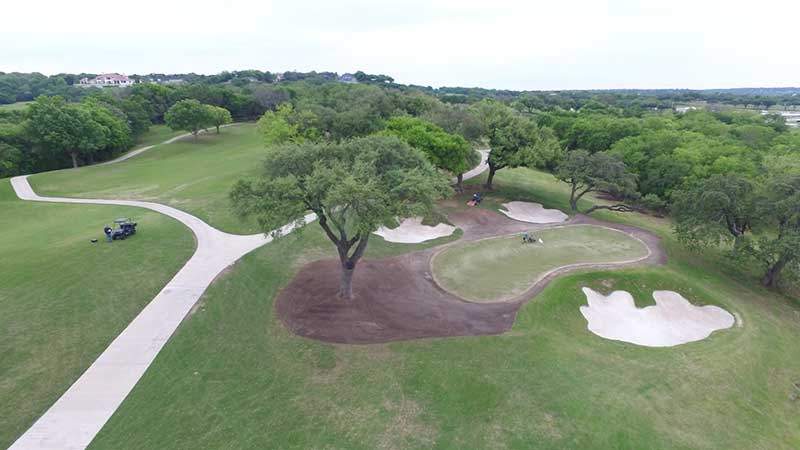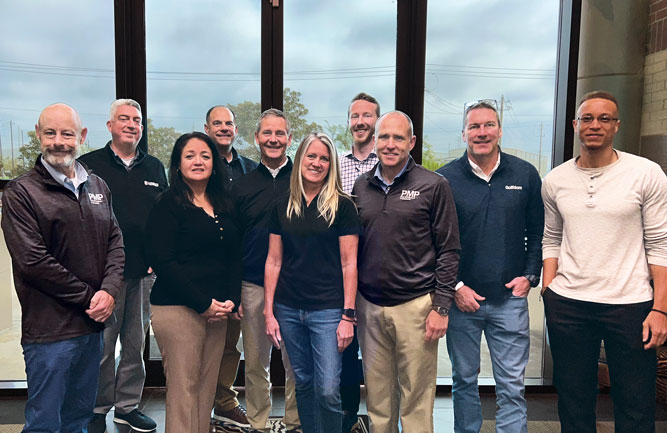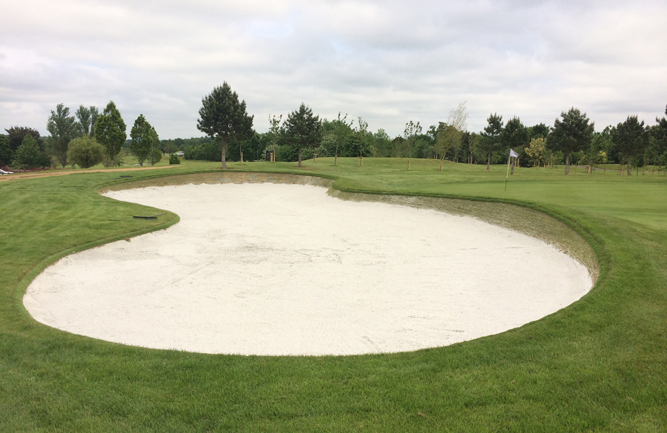Making the most of the bad situation from Winter Storm Uri

Areas of concentrated traffic, shade and north-facing slopes really took a beating this spring. However, once repaired this green surround and approach will be much better than before the damage occurred. (Photo: Jim Moore)
The 2021 Winter Storm Uri resulted in severe damage to many courses that utilize bermudagrass on their greens, collars and approaches.
For many, the extent of the damage is only now becoming clear as warmer temperatures have resulted in bermudagrass breaking dormancy. While there is no doubt that the winter storm and its prolonged subfreezing temperatures were the primary cause of bermudagrass damage, it is very important to identify other contributing factors as well. Most influential were shade, concentrated traffic and mowing height.
It is important to identify these areas so that as many of these problems as possible can be corrected during renovation. While simply replacing lost turf may be the quickest solution, the likelihood of future damage can be greatly reduced by addressing the entire problem. Equally important is the opportunity to not only fix the damage but to improve the facility in the process. Let’s look at just a couple of examples of making the most of a bad situation.
Shade and traffic: the killer one-two punch
Severe winters invariably provide graphic examples of the impact of trying to grow bermudagrass in too little sunlight. You don’t need decades of research to prove that shaded areas are more likely to die in low temperatures. The same is true for concentrated cart traffic.
The lack of an insulating organic layer and compacted soil greatly reduces the chances of surviving a mild winter, much less one as severe as experienced this year. Not surprisingly, shaded, high-traffic areas are a sure bet for a major loss of turf. There will be no easier time to justify the judicious removal of trees that not only block the sun but also funnel traffic into constricted paths.
Repairing lost collars can be an opportunity to reclaim lost hole locations
Many courses with bentgrass and bermudagrass greens suffered major damage to closely mown collars this winter. We all know that greens tend to get smaller with age as a result of staff members avoiding scalping the edges. In the process of replacing these collars, there will be no better time to recoup putting green area lost to this encroachment process. Often, this will result in restoring lost hole locations and the subsequent ability to spread foot and mower traffic over a larger area.
Damaged approaches provide an opportunity to make a major improvement to the course in appearance and playability
Closely mown approaches to greens also suffered this winter. On older courses, these areas are often composed of a hodge-podge of grasses that detract from the appearance, mowing quality and playability of one of the most critical areas of the course.
As a result of the mixture of grasses, winter injury often occurs in patches ranging from complete kill to minor damage. Rather than plugging or sodding only the damaged areas, consider a complete renovation of the approach. This may be the best opportunity you have to smooth depressions, eliminate collar dams and convert to a monostand of one of the improved bermudagrass varieties that offer finer texture and greater cold tolerance. The improvement will be dramatic and appreciated by all.
There are many other examples of how you can help your course recover from this winter and end up better than it was before the damage occurred. Near the end of World War II, Sir Winston Churchill put it best: “Never let a good crisis go to waste.”












